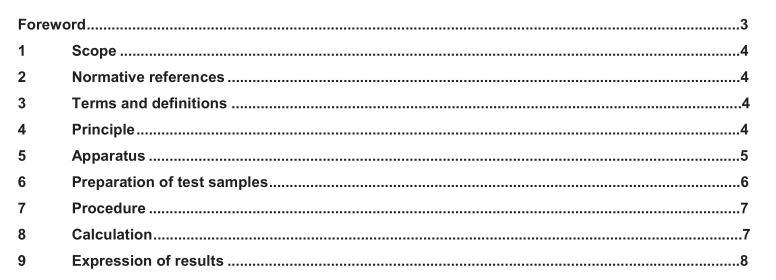EN 13398:2010 – Bitumen and bituminous binders – Determination of the elastic recovery of modified bitumen

7 Procedure
Once the level filled moulds have been kept at the test temperature for 90 min, remove the moulds from the base plate and the sides of the moulds and transfer the bitumen specimens to the traction plates. Then stretch the specimens at the test temperature ± 0,5 °C and at a speed of (50,0 ± 2,5) mm/min up to an elongation of (200 ± 1) mm. Within 10 s after the traction device is halted, cut the bitumen threads in the middle with a pair of scissors, produce two half-each threads. Thirty minutes after cutting the bitumen threads, use a ruler to measure the lengths between the ends of the half-threads and express them in millimetres.
NOTE The operator is allowed to move the half threads slightly in case they are not facing each other properly (“curled ends”). If the thread of one specimen breaks before the elongation of 200 mm and it is not due to a deficient specimen, the laboratory can use the specimen for calculation of elastic recovery under these conditions which shall be stated in the test report. The laboratory shall document their procedure for these cases with respect to the design and operation of the ductilometer.
8 Calculation
For each specimen, calculate the elastic recovery, R E , as a percentage (absolute), rounded up to 1 % using the following equation:
Where
d is the distance between half-threads, in millimetres.
L stretching length. Normally 200 mm is the elongation when the tread is cut. In case of premature break (due to brittleness) L is the length at break.
If the values of elastic recovery determined for both test pieces do not differ by more than 5 % in absolute value, determine the arithmetic mean of these two values.
Otherwise, determine the elastic recovery of an additional test piece. Then calculate the arithmetic mean of the two values which differs the least. However, if their difference differs by more than 5 % in absolute value, ignore the three values and repeat the test with two new test specimens.
9 Expression of results
Report the elastic recovery in percentage rounded to full percent (absolute value).
The arithmetic mean shall be rounded up to 1 % in accordance with ISO 5725 (all parts).
10 Precision
NOTE A Round Robin test carried out according to ISO 5725 (all parts), with 25 European laboratories participating,permitted to establish precision values, which are the best estimation currently known. The following precision data are proposed until results of further round robin tests are available.
10.1 Repeatability
The difference between two single and independent results, obtained by the same operator working with the same apparatus under constant operating conditions on identical test material would in the long run, in the normal and correct operation of the test method, differ by more than 4 % in only one case in twenty.
EN 13398:2010 – Bitumen and bituminous binders – Determination of the elastic recovery of modified bitumen